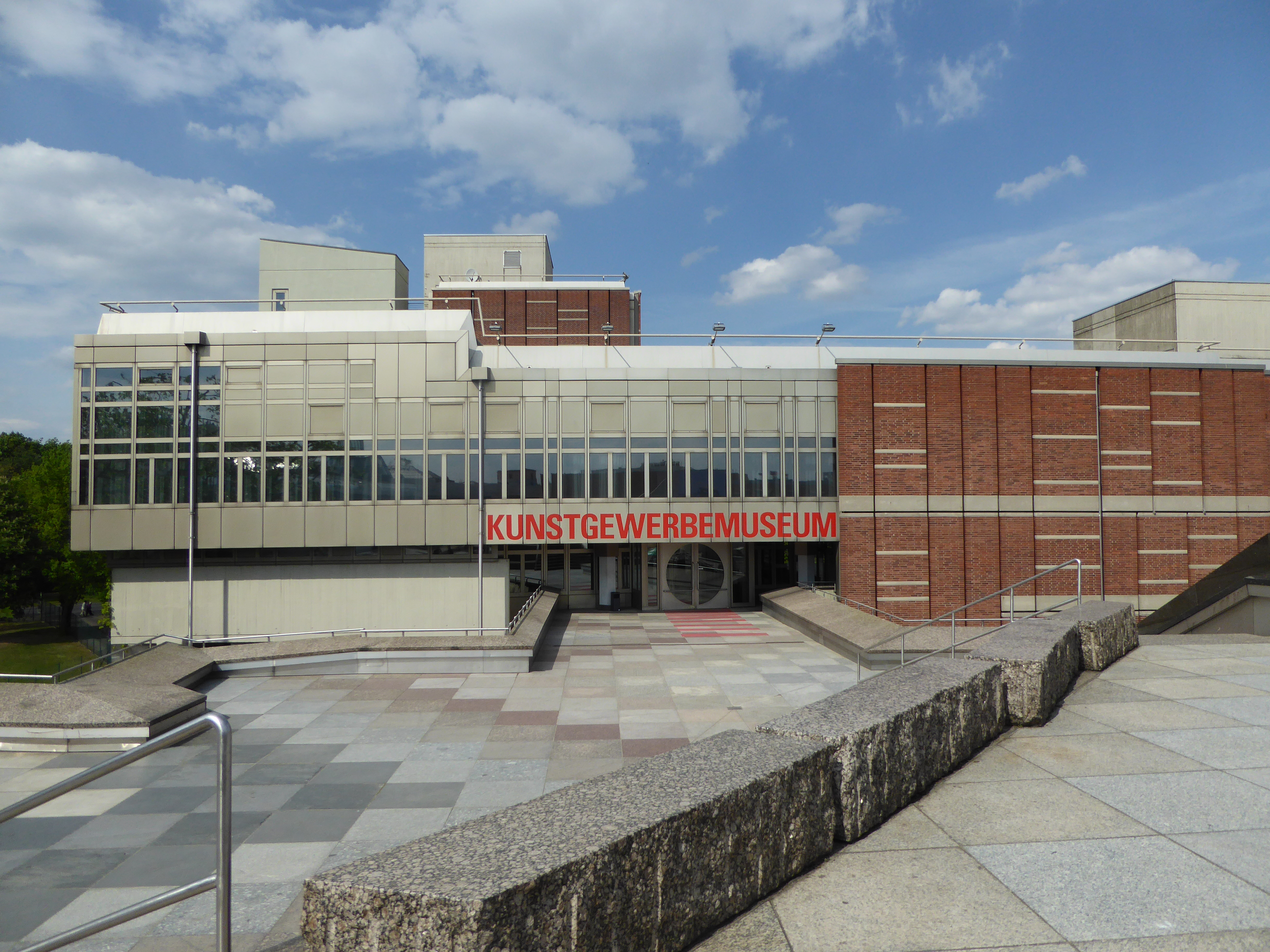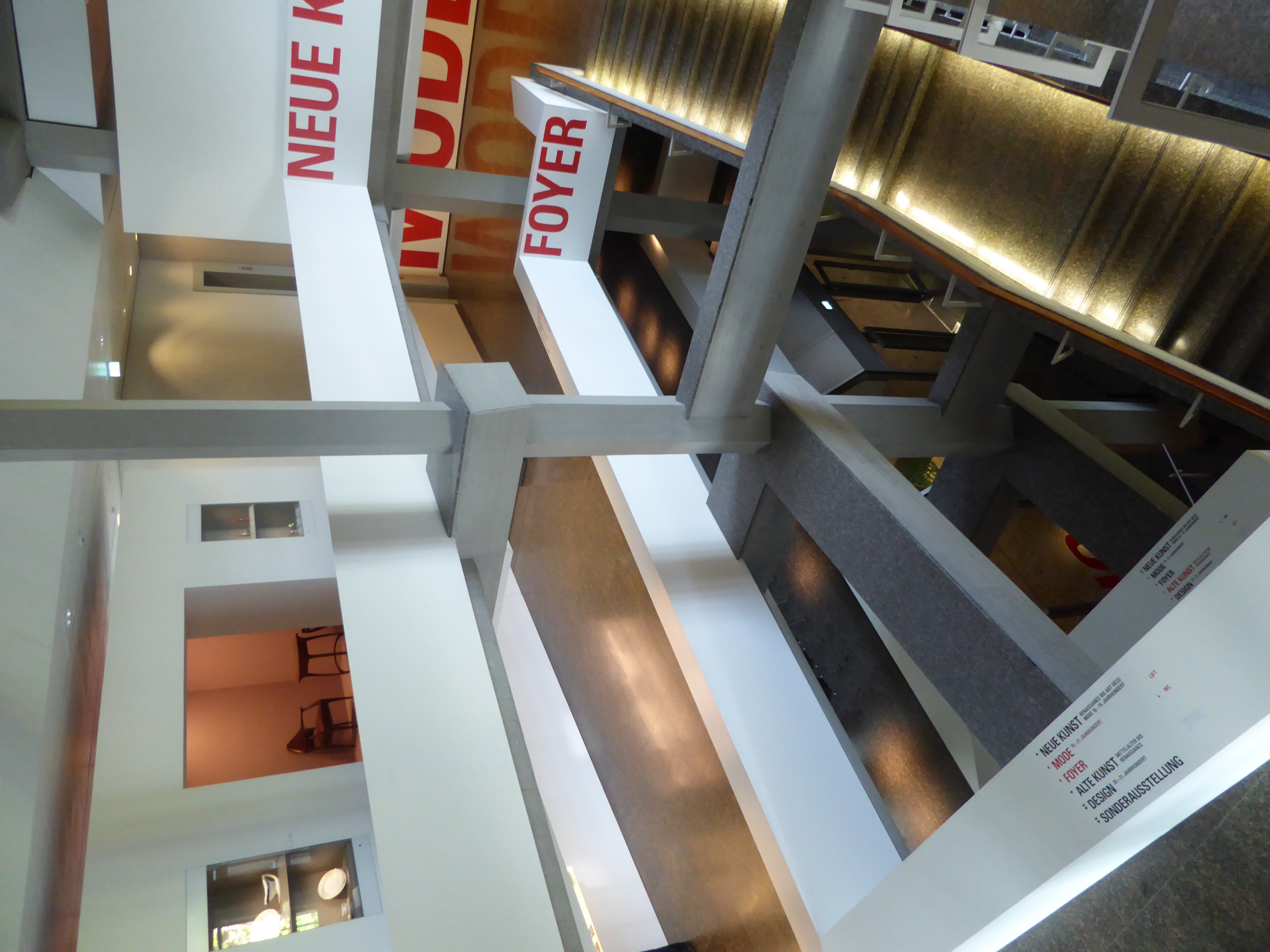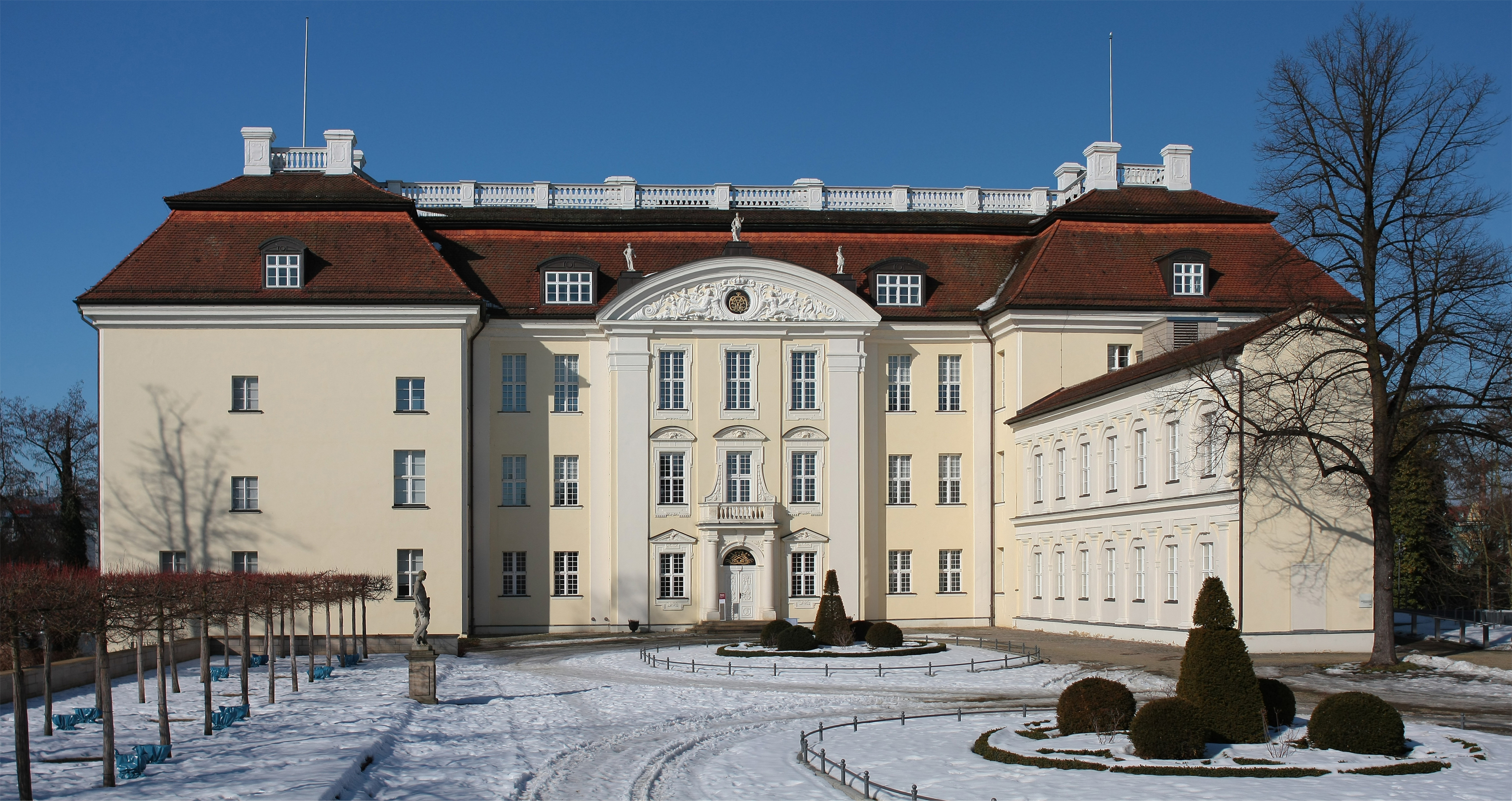Berlin Museum Of Applied Arts on:
[Wikipedia]
[Google]
[Amazon]
__NOTOC__

 The Kunstgewerbemuseum, or Museum of Decorative Arts, is an internationally important museum of the
The Kunstgewerbemuseum, or Museum of Decorative Arts, is an internationally important museum of the
Tobias Timm, '' Die Zeit'', 31 August 2009. Retrieved 26 September 2010. Parts of the collection were destroyed in World War II, and the surviving items were split between
Parts of the collection were destroyed in World War II, and the surviving items were split between
There is a very important collection of
Homepage in English
{{Authority control Art museums and galleries in Germany Museums in Berlin Art museums established in 1868 Decorative arts museums in Germany Textile museums 1868 establishments in Prussia Berlin State Museums

 The Kunstgewerbemuseum, or Museum of Decorative Arts, is an internationally important museum of the
The Kunstgewerbemuseum, or Museum of Decorative Arts, is an internationally important museum of the decorative arts
]
The decorative arts are arts or crafts whose object is the design and manufacture of objects that are both beautiful and functional. It includes most of the arts making objects for the interiors of buildings, and interior design, but not usual ...
in Berlin
Berlin ( , ) is the capital and List of cities in Germany by population, largest city of Germany by both area and population. Its 3.7 million inhabitants make it the European Union's List of cities in the European Union by population within ci ...
, Germany
Germany,, officially the Federal Republic of Germany, is a country in Central Europe. It is the second most populous country in Europe after Russia, and the most populous member state of the European Union. Germany is situated betwe ...
, part of the Staatliche Museen zu Berlin
The Berlin State Museums (german: Staatliche Museen zu Berlin) are a group of institutions in Berlin, Germany, comprising seventeen museums in five clusters, several research institutes, libraries, and supporting facilities. They are overseen ...
(Berlin State Museums). The collection is split between the Kunstgewerbemuseum building at the Kulturforum
The Kulturforum ( en, Cultural Forum) is a collection of cultural buildings in Berlin. It was built up in the 1950s and 1960s at the edge of West Berlin, after most of the once unified city's cultural assets had been lost behind the Berlin Wal ...
and Köpenick Palace
Schloss Köpenick ( en, Köpenick Palace) is a Baroque water palace of the Hohenzollern electors of Brandenburg which stands on an island in the Dahme River surrounded by an English-style park and gives its name to Köpenick, a district of Ber ...
History
It was founded in 1868 as the ''Deutsches Gewerbe-Museum zu Berlin'', and originally had a teaching institute as well as a public museum. The collection grew significantly in the 1870s, and it was renamed ''Kunstgewerbemuseum'' in 1879. In 1881 it relocated into theMartin-Gropius-Bau
Martin-Gropius-Bau, commonly known as Gropius Bau, is an important exhibition building in Berlin, Germany. Originally a museum of applied arts, the building has been a listed historical monument since 1966. It is located at 7 Niederkirchnerstra� ...
– where Priam's Treasure
Priam's Treasure is a cache of gold and other artifacts discovered by classical archaeologists Frank Calvert and Heinrich Schliemann at Hissarlik, on the northwestern coast of modern Turkey. The majority of the artifacts are currently in the Pushk ...
was also on display for a time – and in 1921 it moved into the Stadtschloss.Heute mal ExtremitätenTobias Timm, '' Die Zeit'', 31 August 2009. Retrieved 26 September 2010.
 Parts of the collection were destroyed in World War II, and the surviving items were split between
Parts of the collection were destroyed in World War II, and the surviving items were split between East
East or Orient is one of the four cardinal directions or points of the compass. It is the opposite direction from west and is the direction from which the Sun rises on the Earth.
Etymology
As in other languages, the word is formed from the fac ...
and West Berlin
West Berlin (german: Berlin (West) or , ) was a political enclave which comprised the western part of Berlin during the years of the Cold War. Although West Berlin was de jure not part of West Germany, lacked any sovereignty, and was under mi ...
. The Eastern collection moved into Köpenick Palace in 1963, while the Western exhibits moved first into Charlottenburg Palace
Schloss Charlottenburg (Charlottenburg Palace) is a Baroque palace in Berlin, located in Charlottenburg, a district of the Charlottenburg-Wilmersdorf borough.
The palace was built at the end of the 17th century and was greatly expanded during th ...
, then into the new museum building in the Kulturforum in 1985, built by Rolf Gutbrod.
Exhibition
The Kunstgewerbemuseum displays European (andByzantine
The Byzantine Empire, also referred to as the Eastern Roman Empire or Byzantium, was the continuation of the Roman Empire primarily in its eastern provinces during Late Antiquity and the Middle Ages, when its capital city was Constantinopl ...
) decorative arts from all post-classical periods of art history, and features gold, silver, glass and enamel items, porcelain
Porcelain () is a ceramic material made by heating substances, generally including materials such as kaolinite, in a kiln to temperatures between . The strength and translucence of porcelain, relative to other types of pottery, arises main ...
, furniture, panelling
Panelling (or paneling in the U.S.) is a millwork wall covering constructed from rigid or semi-rigid components. These are traditionally interlocking wood, but could be plastic or other materials.
Panelling was developed in antiquity to make roo ...
, tapestry
Tapestry is a form of textile art, traditionally woven by hand on a loom. Tapestry is weft-faced weaving, in which all the warp threads are hidden in the completed work, unlike most woven textiles, where both the warp and the weft threads ma ...
, costumes, and silks.Museum of Decorative ArtsThere is a very important collection of
Late Antique
Late antiquity is the time of transition from classical antiquity to the Middle Ages, generally spanning the 3rd–7th century in Europe and adjacent areas bordering the Mediterranean Basin. The popularization of this periodization in English has ...
objects in many media. The items from the Middle Ages
In the history of Europe, the Middle Ages or medieval period lasted approximately from the late 5th to the late 15th centuries, similar to the post-classical period of global history. It began with the fall of the Western Roman Empire ...
include a large number of gold reliquaries
A reliquary (also referred to as a ''shrine'', by the French term ''châsse'', and historically including '' phylacteries'') is a container for relics. A portable reliquary may be called a ''fereter'', and a chapel in which it is housed a ''fe ...
(including the reliquary arm of St. Caesarius). The Renaissance
The Renaissance ( , ) , from , with the same meanings. is a period in European history
The history of Europe is traditionally divided into four time periods: prehistoric Europe (prior to about 800 BC), classical antiquity (800 BC to AD ...
is represented by silverware from the city councillors of Lüneburg
Lüneburg (officially the ''Hanseatic City of Lüneburg'', German: ''Hansestadt Lüneburg'', , Low German ''Lümborg'', Latin ''Luneburgum'' or ''Lunaburgum'', Old High German ''Luneburc'', Old Saxon ''Hliuni'', Polabian ''Glain''), also called ...
, and bronze sculpture
Bronze is the most popular metal for Casting (metalworking), cast metal sculptures; a cast bronze sculpture is often called simply "a bronze". It can be used for statues, singly or in groups, reliefs, and small statuettes and figurines, as w ...
s, tapestries, furniture, Venetian glass
Venetian glass () is glassware made in Venice, typically on the island of Murano near the city. Traditionally it is made with a soda–lime "metal" and is typically elaborately decorated, with various "hot" glass-forming techniques, as well as ...
es and maiolica
Maiolica is tin-glazed pottery decorated in colours on a white background. Italian maiolica dating from the Renaissance period is the most renowned. When depicting historical and mythical scenes, these works were known as ''istoriato'' wares ...
s from the Italian princely courts.
The Baroque era is represented by faience
Faience or faïence (; ) is the general English language term for fine tin-glazed pottery. The invention of a white pottery glaze suitable for painted decoration, by the addition of an oxide of tin to the slip of a lead glaze, was a major a ...
s from Delft, and glass items.Monika Bierschenk, ''Kunstgewerbemuseum Berlin. Kunsthandwerk vom Mittelalter bis zur Gegenwart,'' Berlin 1989. There is also European porcelain (particularly from Meissen and the Royal Manufacturer of Berlin), and decorative crockery from the rococo
Rococo (, also ), less commonly Roccoco or Late Baroque, is an exceptionally ornamental and theatrical style of architecture, art and decoration which combines asymmetry, scrolling curves, gilding, white and pastel colours, sculpted moulding, ...
, classicist
Classics or classical studies is the study of classical antiquity. In the Western world, classics traditionally refers to the study of Classical Greek and Roman literature and their related original languages, Ancient Greek and Latin. Classics ...
, historicist
Historicism is an approach to explaining the existence of phenomena, especially social and cultural practices (including ideas and beliefs), by studying their history, that is, by studying the process by which they came about. The term is widely u ...
and Art Nouveau styles. The "New Collection" of 20th century craftwork includes industrially-manufactured products.
See also
*Cloth of St Gereon
The Cloth of St Gereon is a mural tapestry of a repeat pattern with a decorative motif of a bull being attacked by a griffin, a fantastic creature with the body of a lion and the head and wings of an eagle.Thomson, p. 52 "There is a tendency to a ...
, the second oldest European wall tapestry still existing
Notes
External links
Homepage in English
{{Authority control Art museums and galleries in Germany Museums in Berlin Art museums established in 1868 Decorative arts museums in Germany Textile museums 1868 establishments in Prussia Berlin State Museums